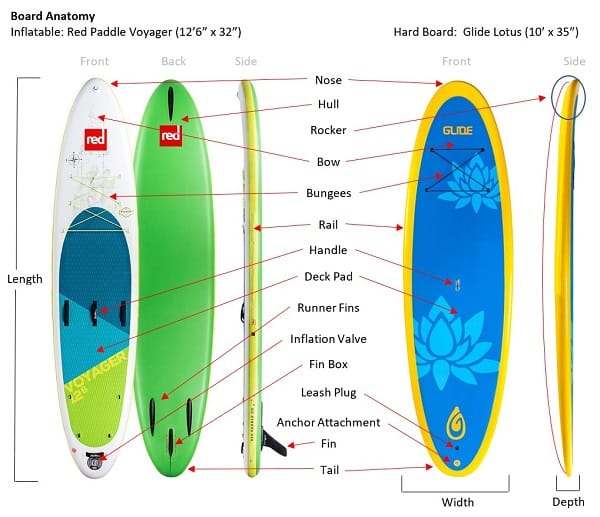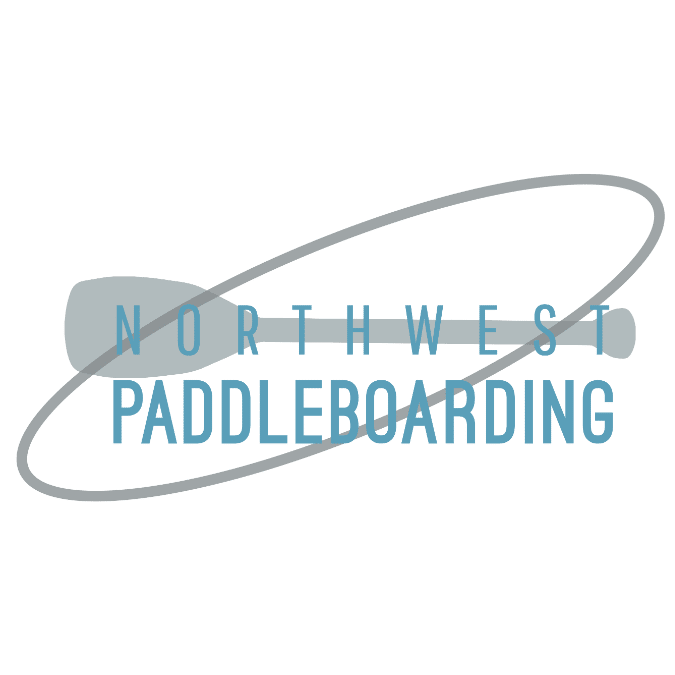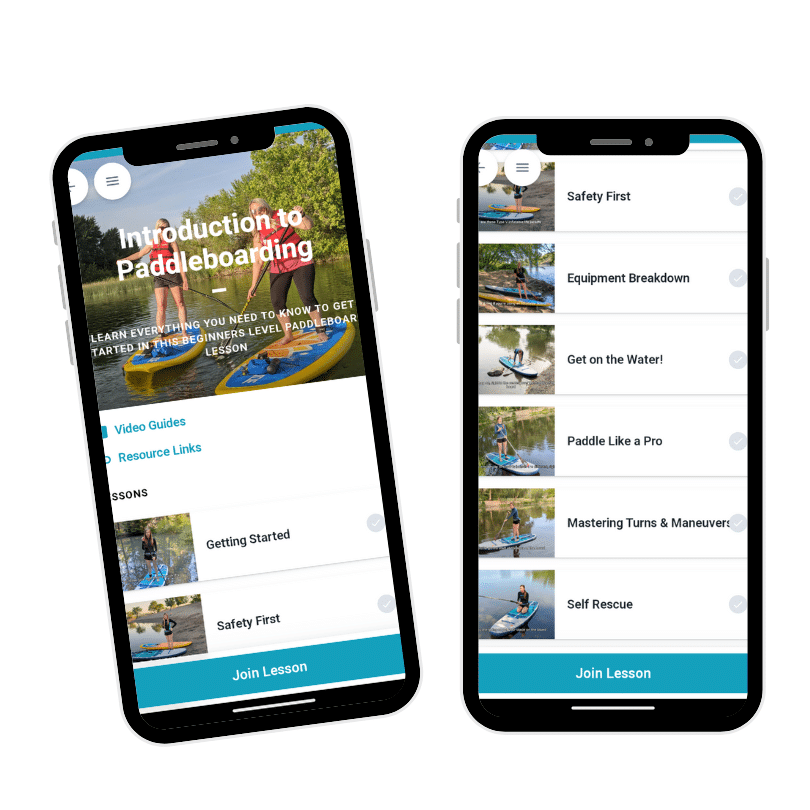Paddleboard (SUP) Basics
Whether you’re looking to buy your first paddleboard or hitting the water with friends, understanding the basic parts of your Stand Up Paddleboard SUP is crucial. Not only will it enhance your experience and safety, but it will also make paddling more enjoyable. This guide focuses on the essential components and general concepts of paddleboards.
Let’s start with paddleboard anatomy!
The image included showcases common features and their locations on two popular board types: inflatable and traditional hard boards. Note the slight variations between them. We’ll also explore key concepts of size and shape, which significantly impact how your board performs on the water.

Paddleboard Length
The length, measured from nose to tail, influences speed and maneuverability. Generally, longer boards offer greater speed, while shorter boards are easier to turn.
Paddleboard Width
Measured rail to rail at the widest point (often near the handle), width affects stability and maneuverability. Wider boards are typically more stable but less maneuverable.
Depth of the Paddleboard
The thickness of the board, also known as depth, translates to volume. More depth translates to greater volume, allowing the board to support more weight.
Volume of the Paddleboard
A combination of length, width, depth, and overall shape determines a board’s buoyancy, measured in liters. Simply put, the higher the volume, the more weight the board can support.
Paddleboard Features:
Handle
This is the balance point of the board meant for carrying ease. Some may be built-in while others may be straps placed in the center. This is important because the handle marks where you should stand or kneel on the board being it is the center of the board.
Leash plug
This is typically found near the tail of the board and is what the leash attaches to. Other boards may have a metal D-ring for attachment. Leashes are an important safety feature and what keeps you attached to your board – we strongly recommend using your leash.
Bungee systems
Bungees are great for being able to store your gear (i.e. drybags, shoes, water bottles, etc.). They are usually found at the front of the board, but some can be near the tail. Some paddleboards don’t have bungees; in that case, there are kits available.
Fin
Some fins are removable where others are not. There are several types of fins and for different purposes. Helpful tip – place your fin at the front of the fin box for more power turning or at the back for more stability and tracking straighter in the water. Read more about how to attach a fin here!
Hull
This refers to the bottom of the board. Most common types are planing or displacement hulls. Planing hulls are wide and flat and are typically found in all-purpose boards (leisure), surfing, or yoga. Boards with displacement hulls have pointed noses and are more for touring and racing. They cut through the water more efficiently creating a faster ride.
Rocker
This refers to the upward curve of the hull, extending from the nose to the tail. Paddleboards with more rocker turn more easily but tend to be slower in flat water conditions.


Thanks for explaining that speed and maneuverability are the things that will be different depending on the length of a paddleboard. I’d like to look for paddleboard rental services soon because I’d like to have more outdoor adventures this year. The past two years, I haven’t been able to enjoy much during my days off from work and it’s about time that I do some catching up.